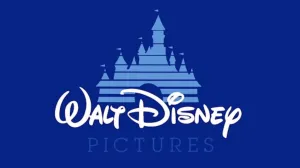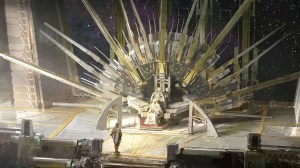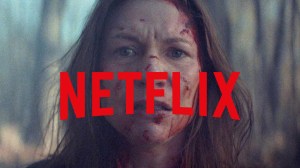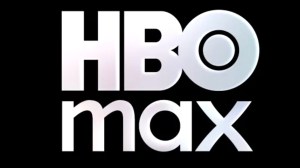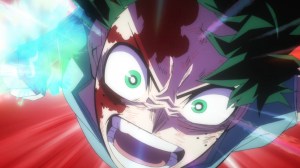“Arrow is just Batman with a new coat of paint.”
Videos by ComicBook.com
For all the times we’ve heard that criticism of The CW‘s flagship superhero drama, it’s rare that anybody actually digs down very deep into it, except for in a really snarky way.
It’s actually a fairly common complaint that goes across all of superhero media. The critique is leveled against Supergirl for the show’s frequent use of Superman foes; Marvel drew some heat for rolling out Quicksilver right around the same time as The Flash headed to TV; Agents of SHIELD got a little bit of Damage Control shade back when it launched, and of course shows like Gotham and the forthcoming Krypton are always in danger of having to answer for the hundredth time when the character is going to put on a costume and the “real” story will start.
Right now, meanwhile, Marvel has a Squadron Supreme series (their take on the Justice League), while DC is about to launch The Terrifics (suspiciously similar to the Fantastic Four).
There’s a never-ending line of these things in comics, and as comics are becoming a bigger and bigger part of the popular culture, expect to see more of them crossing over into film and TV.
For today, though, we’re going to focus on just a few — mostly Supergirl and Arrow — and talk about why being “the poor man’s _____” is maybe not as terrible as it’s cracked up to be.
NEW IDEAS
Perhaps the most important reason not to belittle this practice is simple: there are ideas that are very unlikely ever to make it into a big-screen adaptation of an A-list character, but can easily find a way to resonate with audiences when handed off to another character.
Mainstream superhero comics have been in print for more than 75 years, and there have been tens of thousands of stories told during that time. Action Comics and Detective Comics alone are nearing their thousandth issues (Action within the next year).
Not all of those stories, or the characters contained therein, are classics — and even among the genuinely good ones, not all of them are filmable.
Among the characters and concepts that seem like self-evidently awesome ideas to longtime fans, though, there are hundreds that are unlikely to ever make the grade as a feature film starring Superman or Batman. The budgetary and scheduling constraints of such productions are simply too great, and the fact that Marvel and DC have movies that are all part of an elaborately-Jenga-ed shared universe makes it even less likely that side characters, subplots, and non-super stories will ever be told in the blockbuster epics.
Introducing them into TV series allows them to start as minor characters and grow as the story merits it — but the A-list characters attached to many of these properties will not have a live-action series again anytime soon. So the best chance to see someone like Morgan Edge is to remove him from the context of Superman and Metropolis and drop him into National City with Supergirl.
This has been true across the Arrowverse of shows, with characters like Vibe and Wild Dog, who haven’t been able to support their own comics in decades (if ever) becoming mainstream success stories on shows with viewerships larger than the circulation of DC’s best-selling comic books.

SUPPORTING CASTS
We wouldn’t be the first, or the hundred thousandth, to note that superhero comics are basically soap operas for a different demographic.
A big part of the appeal of most of the best superhero comics is the supporting cast — and you can track a trend in recent comics whereby the superheroics and “events” take center stage at the expense of the supporting cast, which has contributed to a culture where comic book readers tend to read things they think “count” instead of things that are simply good.
The same logic that threatened to sink Flashpoint in the first couple of months following its announcement as a “stand-alone” and “alternate universe” event could very well have torpedoed Watchmen if it tried to debut in today’s superhero comics market.
Big-budget movies featuring A-list characters are, by and large, the live-action equivalent of event comics. Nothing happens that’s “small,” and very little of the time is spent on the characters’ personal lives.
But, as is evidenced by the huge shipping communities that surround basically every superhero show, there is an audience for these characters to slow down and have actual lives, friends, loved ones, and the like — in fact, most people who watch the shows demand some degree of development beyond just the punching of bad guys.
And while Superman and Batman are off battling Darkseid together, Green Arrow and Supergirl have meaningful relationships with their partners, friends, co-workers, and other non-masked people.

IT ISN’T AS SIMPLE AS YOU THINK
The last point? In almost none of these cases are the “poor man’s version” actually a poor man’s version.
Yes, they may borrow some — or a lot — from the mythologies of other characters, but when done right, those thefts are happening in a way that strengthens the mythology of the specific character in question without undermining the mythology who are providing the raw story materials.
That Gotham is planning to use Ra’s al Ghul, complete with “I want you to be my heir” and “here’s a Lazarus Pit,” in its upcoming season seems like a pretty good indication that Arrow returned the character in pretty much the same condition they found it, while still telling some stories that rank among the show’s strongest with Ra’s as a villain.
Supergirl is, again, a prime example here: Cat Grant has never really found a niche in the Superman mythology. Created as a potential love interest for Clark and rival for Lois, her creation came just before the Lois/Clark relationship “grew up” in the ’90s and the pair were married. Try as they might, later writers never exactly seemed to find a comfortable groove for Cat.
Bringing her to Supergirl, though, allowed the writers to create a whole new dynamic between Cat and the super-powered character in her orbit. Why? Well, in part, because Supergirl may borrow a lot from Superman but both as a character and as a TV series, the two are incredibly distinct.

MORE LIKE THIS
SUPERGIRL is an action-adventure drama based on the DC character Kara Zor-El, (Melissa Benoist) Superman’s (Kal-El) cousin who, after 12 years of keeping her powers a secret on Earth, decides to finally embrace her superhuman abilities and be the hero she was always meant to be. Twelve-year-old Kara escaped the doomed planet Krypton with her parents’ help at the same time as the infant Kal-El. Protected and raised on Earth by her foster family, the Danvers, Kara grew up in the shadow of her foster sister, Alex (Chyler Leigh), and learned to conceal the phenomenal powers she shares with her famous cousin in order to keep her identity a secret.
Years later, Kara was living in National City and still concealing her powers, when a plane crash threatened Alex’s life and Kara took to the sky to save her. Now, Kara balances her work as a reporter for CatCo Worldwide Media with her work for the Department of Extra-Normal Operations (DEO), a super-secret government organization whose mission is to keep National City – and the Earth – safe from sinister threats. At the DEO, Kara works for J’onn J’onzz (David Harewood), the Martian Manhunter, and alongside her sister, Alex, and best friend, Winn Schott (Jeremy Jordan). Also in Kara’s life are media mogul Cat Grant (Calista Flockhart), James Olsen (Mehcad Brooks), a photo journalist who moonlights as Guardian, a masked vigilante, Lena Luthor (Katie McGrath), and Mon-El of Daxam (Chris Wood), whose planet was ravaged by Krypton’s destruction. As Kara struggles to navigate her relationships and her burgeoning life as a reporter, her heart soars as she takes to the skies as Supergirl to fight crime.
Based on characters created by Jerry Siegel and Joe Shuster, SUPERGIRL is from Berlanti Productions in association with Warner Bros. Television, with executive producers Greg Berlanti (“The Flash,” “Arrow”), Andrew Kreisberg (“The Flash,” “Arrow”), Sarah Schechter (“Arrow,” “The Flash”), Robert Rovner (“Private Practice,” “Dallas”) and Jessica Queller (“Gilmore Girls,” “Gossip Girl,” “Felicity”).
After a violent shipwreck, billionaire playboy Oliver Queen (Stephen Amell) was missing and presumed dead for five years before being discovered alive on a remote island in the North China Sea. He returned home to Star City, bent on righting the wrongs done by his family and fighting injustice. As the Green Arrow, he protects his city with the help of former soldier John Diggle (David Ramsey), computer-science expert Felicity Smoak (Emily Bett Rickards), his vigilante-trained sister Thea Queen (Willa Holland), Deputy Mayor Quentin Lance (Paul Blackthorne), brilliant inventor Curtis Holt (Echo Kellum), and his new recruits, street-savvy Rene Ramirez (Rick Gonzalez) and meta-human Dinah Drake (Juliana Harkavy).
Oliver has finally solidified and strengthened his crime-fighting team only to have it threatened when unexpected enemies from his past return to Star City, forcing Oliver to rethink his relationship with each member of his “family”.
Based on the characters from DC, ARROW is from Bonanza Productions Inc. in association with Berlanti Productions and Warner Bros. Television, with executive producers Greg Berlanti (“The Flash,” “Supergirl”), Marc Guggenheim (“DC’s Legends of Tomorrow,” “Eli Stone”), Wendy Mericle (“Desperate Housewives,” “Eli Stone”), Andrew Kreisberg (“The Flash,” “Eli Stone,” “Warehouse 13”) and Sarah Schechter (“The Flash,” “DC’s Legends of Tomorrow”).
More like this:

